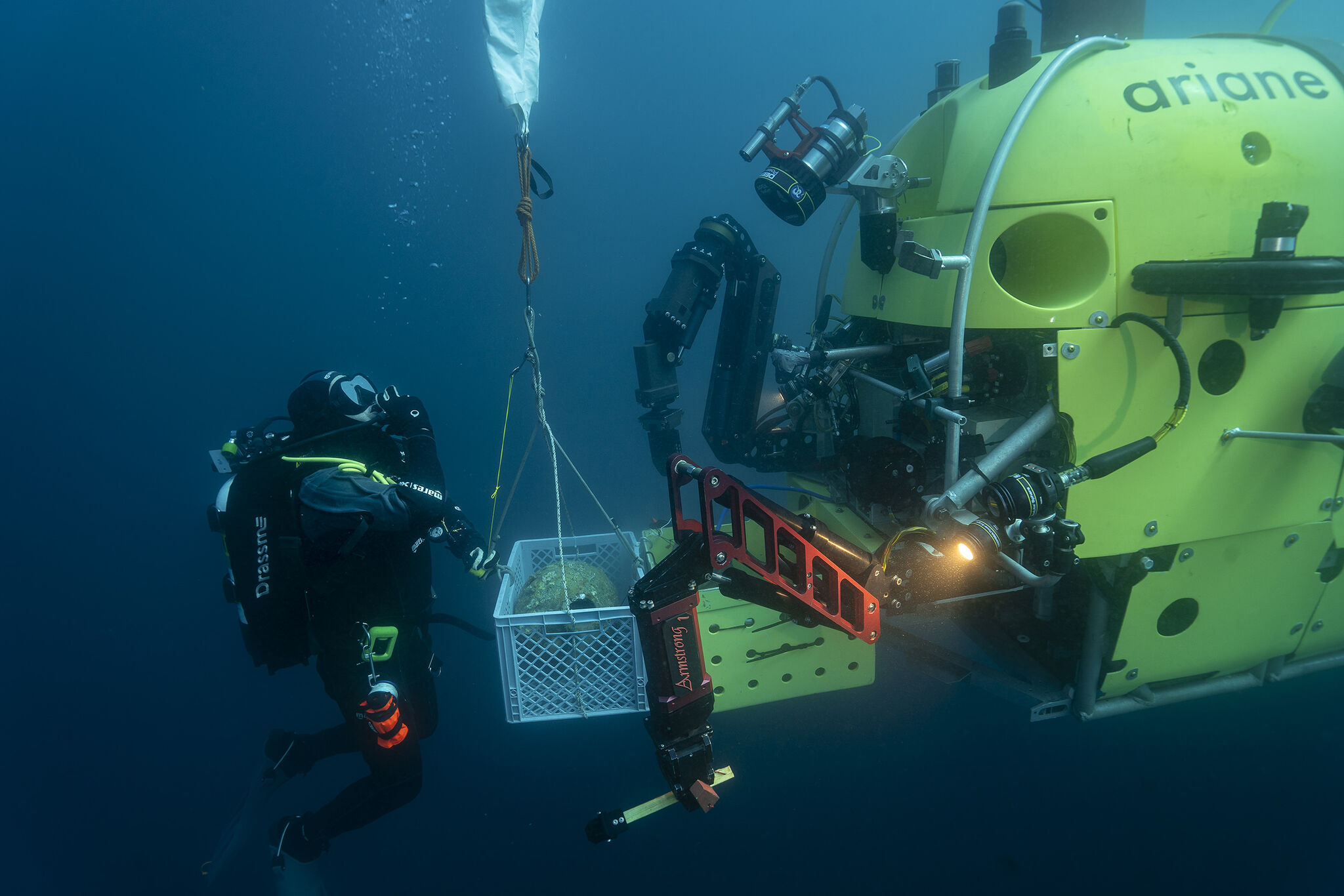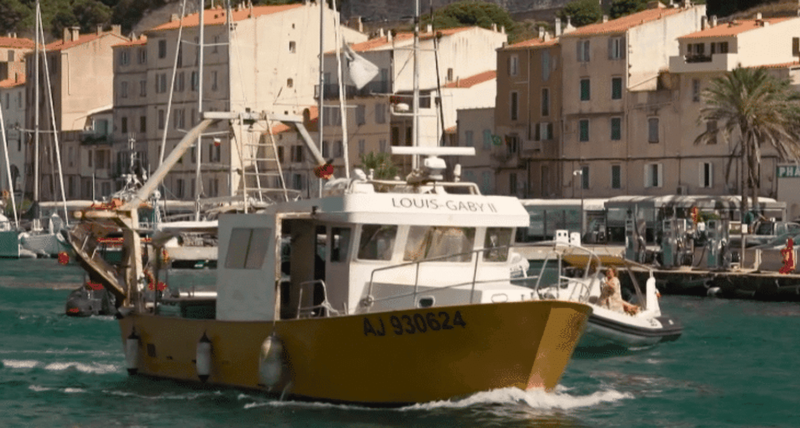In the harbor of Toulon, over 90 meters deep, lies La Lune, the royal ship of Louis XIV that sank on November 6, 1664. Discovered in 1993 during a trial dive of the Ifremer submarine Nautile, this wreck has been the subject of a multi-year archaeological research program led by Drassm since the 2010s and is currently co-directed by Olivia Hulot (Drassm) and Michel L’Hour (Academy of Marine Sciences). In 2025, Drassm and Ifremer combine their expertise and, for the first time, the HROV (hybrid remotely operated underwater vehicle) Ariane of the French Oceanographic Fleet, operated by Ifremer, will dive on this exceptional archaeological site.
The Moon: A Time Capsule
Returning from a disastrous military expedition to Djidjelli (in present-day Algeria) aimed at establishing a French maritime base to counter the actions of Barbary pirates, a constant threat to European trade in the Mediterranean, La Lune was forced to undergo quarantine in the Hyères Islands. The ship, already in poor condition, could not withstand the massive storm that struck the Provençal coast on November 6, 1664. La Lune sank instantly, taking with it more than 900 people, sailors and passengers, along with all their equipment.
Since 2012, over several archaeological campaigns, the wealth of archaeological material preserved on the wreck has gradually been revealed: decorated ceramics, glassware, numerous pieces of artillery—including cannons and several weapons, as well as the ship’s bell and an anchor. « All these artifacts are material witnesses to the maritime, military, social, and technical history of that time. They make La Lune one of the largest submerged museums of 17th-century European history » (Olivia Hulot).
The Moon: A Laboratory for Robotics
Since Drassm archaeologists are naturally limited in depth for their interventions, it is through the development of robotics that the site is studied. « A true experimental laboratory, the La Lune wreck has become the ideal site to test innovative technologies tailored to deep-sea underwater archaeology » (Michel L’Hour). Numerous robots have been developed in partnership with engineers and roboticists, and three ROVs (remotely operated underwater vehicles) were designed in collaboration with the Laboratory of Computer Science, Robotics, and Microelectronics of Montpellier (LIRMM-CNRS).
The 2025 mission will be an opportunity to experiment with new working methods, particularly by deploying the Ariane robot, which is expected to provide unprecedented data.
Launched in 2017, Ariane is a hybrid remotely operated underwater robot powered by lithium-ion batteries and connected to the surface via fiber optic cables. Ariane enables « day dives » of up to 2,500 meters depth for intervention, sampling, inspection, or optical and acoustic mapping missions, even in highly rugged areas. The horizontal management of the fiber optic cable allows navigation without the hindrance of a supporting cable, along cliff faces and even under overhangs. Ariane contributes to significant advancements in 3D vision and optical mapping of complex underwater topography.
The Moon Welcomes Ariane
With the technical support of Alfred Merlin, a scientific vessel from the Ministry of Culture managed by Drassm, the HROV Ariane was deployed for 8 operational days. « One of the major challenges of this mission was to experiment with a wide range of Ariane’s technical capabilities in a unique archaeological context » (Laurent Artzner, mission leader for Ifremer for the HROV Ariane on La Lune). « We validated a small-bottom winch and new delicate gripping systems. The next-generation diving management software, Mimosa 3, was used routinely. The telepresence system, with the new virtual digital hall at the Ifremer Mediterranean center in La Seyne, was also tested. These various trials allowed us to clear the contemporary fishing net that had become caught on the port side of the wreck, to unearth a water jar, to search for a lost cannon and clean another, and finally to create a complete photogrammetric 3D coverage of the wreck. »



